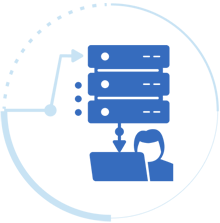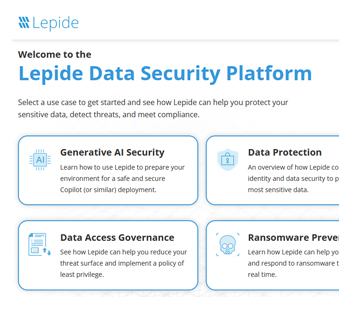Last Updated on February 5, 2025 by Satyendra

The market for data access management has grown rapidly and was expected to reach $18.83 billion in 2024, up from $16.23 billion in 2023. Data is therefore your company’s most valuable asset. To safeguard their data assets, companies now include data access management solutions as a crucial part of their overall data strategy.
What is Data Access Management
Data access management is the process of controlling, monitoring, and regulating the way data is accessed inside an organization. Technologies and methods for accessing this data are also described in these management protocols. Data access is essential to the overall data management strategy of a business. Protecting sensitive data, establishing data ownership, and implementing controlled access restrictions are all part of it. It accomplishes this by limiting access to the data by unauthorized individuals and making sure those who require it can get to it quickly and securely.

Why is Data Access Management Important?
Let’s examine the value of data access for companies and how it might facilitate the enhancement of their entire security posture.
- Reduced Risks of Unauthorized Access: The risk of purposeful or unintentional misuse by employees is reduced by data access management. The possible impact of insider threats can be reduced by businesses by restricting access to only the most essential data and routinely auditing access rights.
- Enhanced Security: Data access management solutions make it simple for administrators and IT teams to monitor and record suspicious activity and take action before a threat materializes. The process of actions can also be automated by security teams using sophisticated setup and orchestration technologies. Sensitive information is only accessible by authorized people when data access management is done correctly. Organizations that adopt robust authentication and access controls can lower the risk of data breaches, leaks, and unauthorized access.
- Compliance: Businesses that adopt proper data access setup and training can overcome security threats and adhere to industry norms and regulations. GDPR, HIPAA, and PCI-DSS standards, which mandate that businesses control and restrict access to specific data, apply to a wide range of industries. In order to comply with these regulations and stay out of trouble, proper data access management can be helpful. Data access management solutions not only adds an extra degree of protection but also makes sure that business procedures follow these guidelines. Given the current situation and increasing demand, companies are realizing how urgently they need a solution to control security threats and enhance security posture in the long run.
- Data Flow: By facilitating the seamless flow of information, data access enables businesses to gain highly pertinent insights from their data architecture. Through prompt and precise data access, businesses can increase productivity, cut expenses, and simplify operations. Businesses have total control over the data flow when they use access management solutions. Administrators and IT teams can regulate the flow of data depending on many characteristics, such as user, user level, department, location, perimeter, device, etc., by using these systems to set workflow and data access levels.
- Tracking and Accountability: A thorough record of who accessed what data and when is made possible by data access management. For troubleshooting, accountability, and transparency, the audit trails are crucial. In the event that a problem arises, it becomes simpler to locate the cause and spot any illegal activity. A well-designed data access model guarantees that the appropriate people get timely access to the proper data. As a result, there are fewer delays, more productivity, and quicker decision-making.
Data Access Management Best Practices
The fact that 71% of businesses report no more than five major instances of illegal physical access or access management annually emphasizes the importance of a systematic approach to data access. A list of some of the most crucial best practices for data access management is listed below.
-
- Define Clear Roles: Establish well-defined roles for employees to access the data that outline who has access to what information, when, and why. Every user profile should clearly outline the user’s role within the company and specify their access privileges in accordance with role-based control policies. User management is applicable to both customers and clients as well as third parties. They should also prevent duplicate user accounts and delete unused profiles when employees leave. Authorized users should be uniquely identifiable so that their activity can be tracked and securely authenticated while they use company resources.
- Implement the Principle of Least Privilege: In data access management, establishing least-privileged access controls is a basic best practice that lowers the security risks associated with unauthorized access to data. According to this theory, network users should only have restricted access to data and apps. Users should have access to the resources they need to fulfill their professional obligations. It will be challenging for an attacker to move around the network if they are successful in breaking in. Security teams may be able to protect critical systems and contain threats more easily.
- Implement Security Measures: It is much more difficult to circumvent network security measures when many authentication elements are required before access is granted. MFA has security benefits, but it also requires compliance with regulations such as PCI-DSS and HIPAA. Less access principles and role-based constraints are only two aspects of the problem of data access. The authentication and network security layers also help with resource protection and data access. This strengthens the network edge and reduces the likelihood of hostile intrusion
- Role-Based Access Controls: Security is improved and the data access management problem is made simpler by role-based access control (RBAC). Organizational roles and the proper access privileges are linked by RBAC configurations. Assigning access rights to certain employees is not necessary. The rights granted to new personnel are determined by their position within the company. The proper privileges are provisioned via automated technologies. Additionally, when employees depart or change responsibilities, they have the ability to remove outdated access privileges.
- Continuous Monitoring and Auditing: One of the best practices for data access management is to conduct regular auditing and monitoring to make sure data access is operating as intended. In order to help administrators expedite the authentication process, the technical audit finds user experience problems. To guarantee that sensitive data access is constantly tracked, audited, and shielded from unauthorized use, log data storage and usage for auditing and security purposes is crucial to data access management. IT teams can decrease their attack surface and deprovision access by routinely monitoring use records and access permissions.
Challenges of Managing Data Access
- Distributed IT Systems: The fact that today’s IT systems comprise numerous on-premises and cloud networks is one of the most management challenges for data access. These systems consist of different devices, assets, and virtual computers and are dispersed among several places. Every gadget has access to data, and monitoring every one of them is a huge undertaking. Businesses intend to expand their use of cloud-native solutions in 97% of cases. Access control techniques will need to change as a result of the shift to cloud computing, which makes distributed IT systems the standard.
- Excessive Permissions: Businesses appreciate cloud workloads’ agility and flexibility in a cutthroat market. Often, security is neglected in the haste to get to market quickly. Administrators may allow users to have extra permissions in order to avoid development delays. The degree of security offered by the access control system is greatly diminished by this behavior. Reducing the amount of excessive permissions that users are given can assist stop these internal data breaches by adhering to the security principle of least privilege. Additionally, it might be challenging to monitor and manage policy exceptions that are occasionally necessary due to exceptional situations. It can also be difficult to identify unwanted access when making exceptions too frequently.
- Access Control Models: Selecting the right data access models for your company allows you to balance staff productivity with proper security. RBAC is still the authorization option that is used the most. RBAC is easier to set up and works better for small enterprises. Mandatory access control (MAC) and discretionary access control (DAC) are examples of other historical authorization methods. The military and government organizations frequently adopt these models. Attribute-based and policy-based access controls are two examples of sophisticated models that provide fine-grained control over authorization decisions. These models allocate attributes based on the user’s ability to evaluate a resource
- Monitoring and Reporting: For data access systems to be in accordance with both internal policy and governmental standards, organizations must constantly monitor them. Any modifications or infractions must be noted right away and reported. Failing to do so may cause private information to end up in the wrong hands and result in fines under privacy regulations. Research shows that a single noncompliance cost businesses $4 million in sales on average.
- Policy Management: The organization’s decision-makers may write the policies and procedures, which presents a challenge. In order to apply the intended policies and processes, the IT department converts them into code. Proper coordination between these two departments is necessary to ensure that the access management is current and functioning as planned. In addition to decision makers’ inability to update or modify the policies independently, policy implementers are not aware of the purpose of access control rules.
Who Controls Data Access Management?
It is not the responsibility of a single stakeholder in an organization to control data access. Given its scope and the number of activities it covers, managing the data is entirely a team effort. Although there are a lot of people involved, the data access management is primarily controlled by three groups.
- Consumers: When it comes to access management, this is the most diversified group. Data scientists, business analysts, chief data officers, consultants in sales or marketing, and others may fall under this category since they are the final users of the data. To perform their duties, these users need quick access to pertinent data as long as it is done legally.
- Compliance Officers: The Compliance Officers are regarded as the most crucial group. They must be aware of their organization’s production systems, security protocols, and auditing standards since their concerns cannot be disregarded. The compliance officer may be punished or even imprisoned for even one infraction. All data compliance laws and regulations must be adhered to, and they must make sure that only individuals with the appropriate authority or training can view the data.
- Owners: The sensitive data in an ecosystem belongs to its owners. Data owners should not have their aims and concerns reduced for the sake of data science goals because they understand the value of data. They must adhere to security regulations, meet criteria, and maintain production systems for audits.
How Lepide Helps
The Lepide Data Security Platform allows for greater control over who can access critical data. It enables users to track user behavior, identify users with excessive rights, see who has access to critical information, where it is, and how access is granted. In order to facilitate and expedite rehabilitation, Lepide also automatically identifies users who possess an excessive amount of authorization. By giving data access management a priority, businesses enhance data security, privacy, integrity, and compliance. Want to see who has access to your sensitive data? Get a demo scheduled today!


 Group Policy Examples and Settings for Effective Administration
Group Policy Examples and Settings for Effective Administration 15 Most Common Types of Cyber Attack and How to Prevent Them
15 Most Common Types of Cyber Attack and How to Prevent Them Why AD Account Keeps Getting Locked Out Frequently and How to Resolve It
Why AD Account Keeps Getting Locked Out Frequently and How to Resolve It
